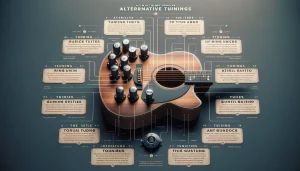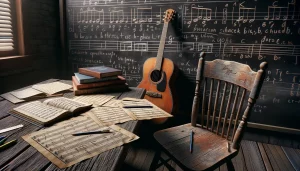Understanding Alternate Guitar Tunings
Imagine picking up your guitar and hearing not just the familiar chords but entirely new landscapes of sound. That’s what alternate tunings do—they open hidden doors. If you’re tired of playing the same old EADGBE chords, welcome to a world where creativity takes center stage! Alternate tunings reshape your instrument like a painter changing their canvas.
Why Bother with Alternate Tunings?
At first, changing your tuning can feel like flipping your world upside down, but here’s why it’s worth it:
- Fresh Inspiration: Experimenting with tunings like Drop D or Open G introduces new chord voicings and textures that may surprise even seasoned players.
- Signature Sounds: Ever wonder how players like Joni Mitchell or Keith Richards sound so unique? Hint: It’s often their alternate tunings in action.
- Playability: Some tunings make complex riffs or fingerstyle pieces easier on your hands.
It’s Not Just About Sound, It’s About Feel
Your fingers will land in places they’ve never traveled before, unlocking shapes and progressions impossible in standard tuning. For example, try strumming an Open D tuning (DADF#AD)—the harmonics seem to shimmer as if your guitar is singing back to you. Once you’ve dipped your toes into this ocean of possibilities, trust me, there’s no going back!
Popular Alternate Tunings and Their Uses
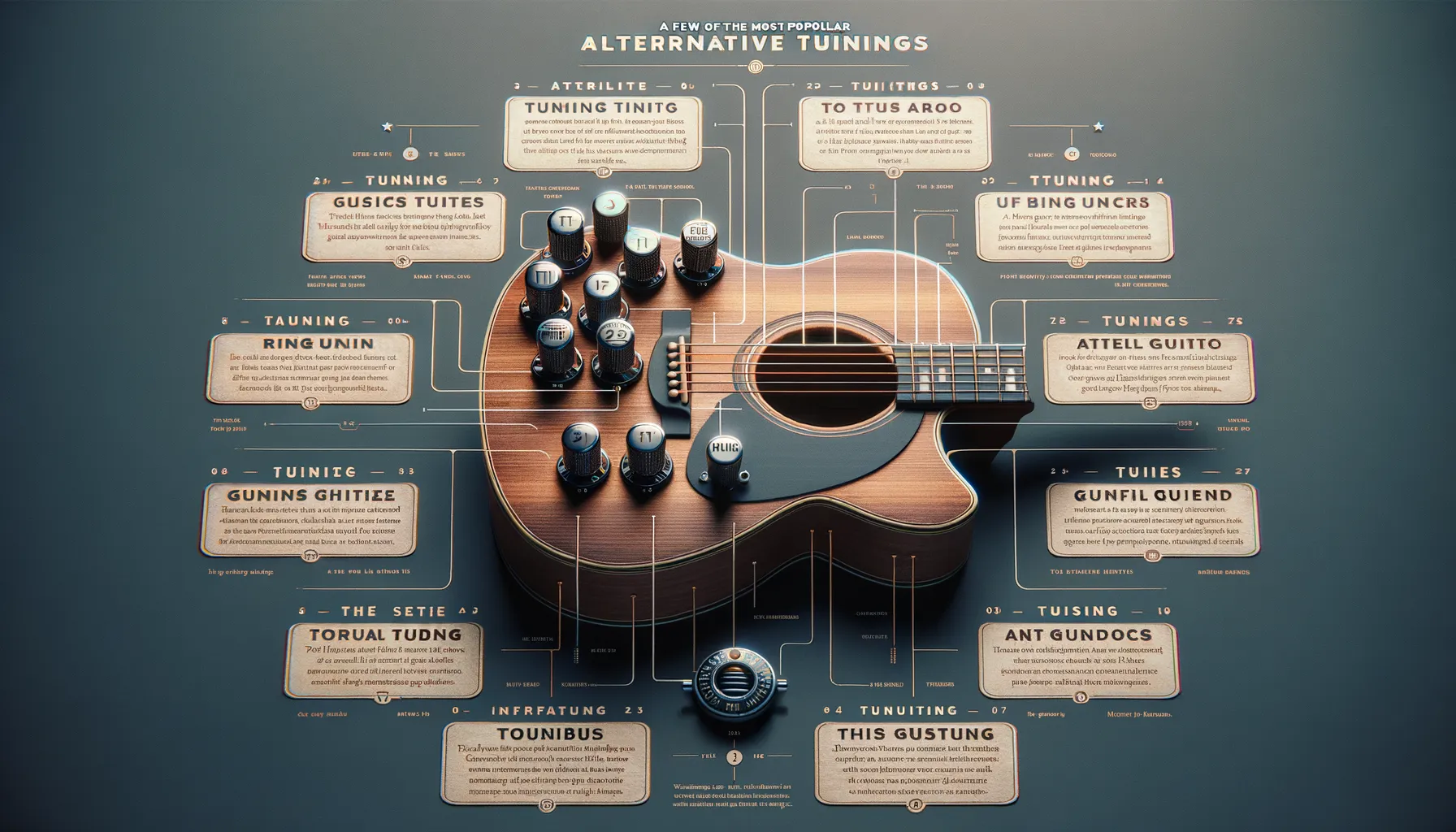
Unlocking the Magic of Drop D, Open G, and More
Feeling stuck in standard tuning? Alternate tunings are like opening a hidden door to a treasure-filled room—it’s incredible what you’ll discover. Take Drop D, for instance. By lowering your low E string to a D, you instantly unlock a world of chunky power chords perfect for rock, metal, and even acoustic fingerpicking. Ever tried playing “Everlong” by Foo Fighters? That haunting resonance is thanks to Drop D.
Or how about Open G? This sunny, slide-friendly tuning was made famous by legends like Keith Richards of The Rolling Stones. Strumming without fretting already creates a rich chord, making it ideal for bluesy riffs and bright, open jams. Picture yourself playing “Honky Tonk Women” in no time—it’s a game-changer.
Dive into the Ethereal World of DADGAD & Beyond
Now, let’s talk about DADGAD. It’s not just a tuning; it’s an atmosphere. Celtic music practically breathes through these strings. Think of Loreena McKennitt or Led Zeppelin’s “Kashmir”—that mysterious, otherworldly tone is all thanks to this setup.
Want more inspiration? Here are a few popular tunings players can’t get enough of:
- Open D: Perfect for soulful slide guitar à la Robert Johnson.
- Half Step Down: A rock favorite—Jimi Hendrix used it for punchier bends.
- CGCGCE: Nicknamed “C6,” it’s adventurous and great for modern fingerstyle.
Each tuning tells its own story—why not make one yours?
How to Retune Your Guitar Effectively
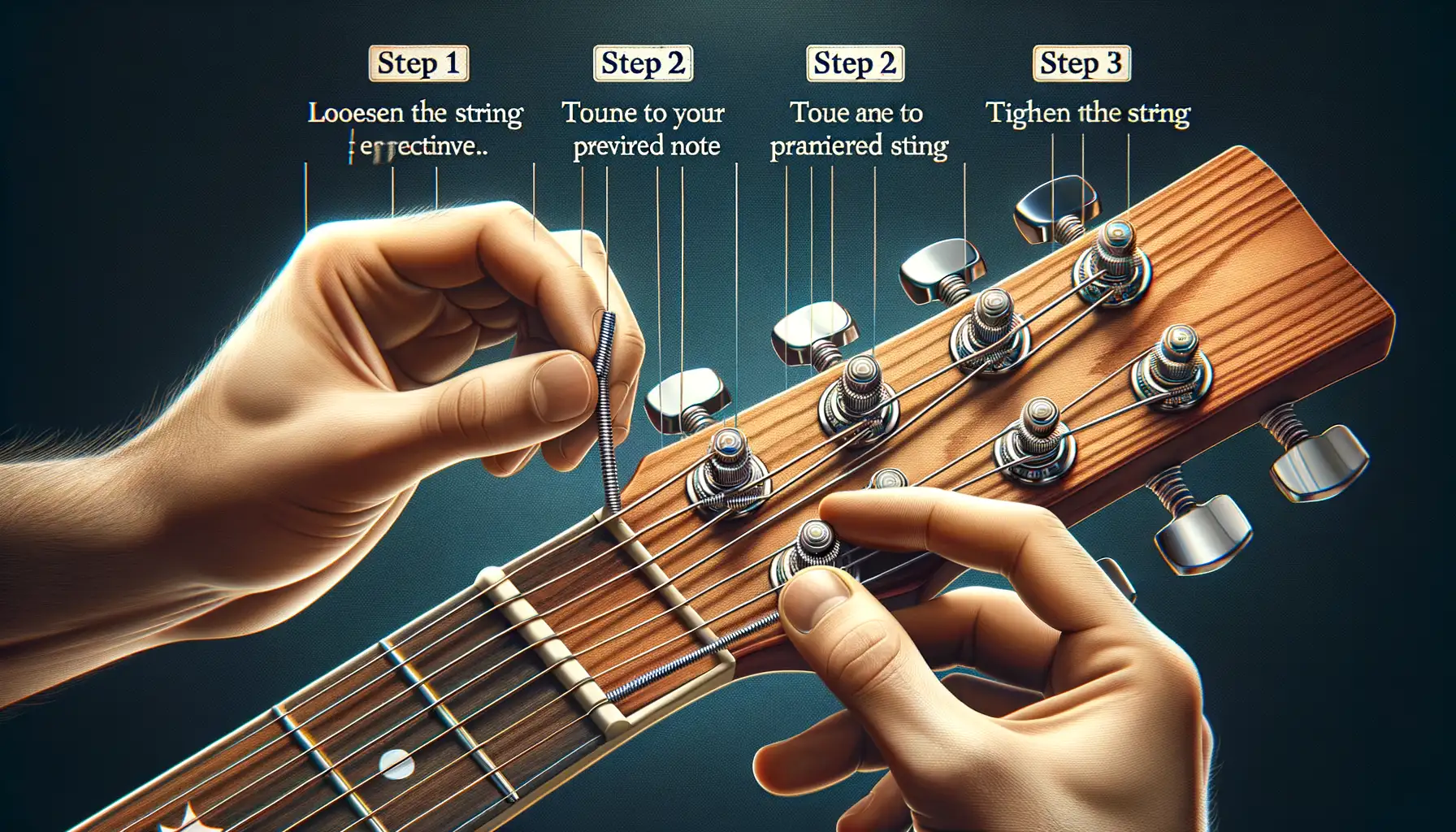
Master Your Ears and Hands for Precision
Retuning your guitar isn’t just a task—it’s an adventure in reshaping sound. Whether your goal is to dive into the moody depths of Dropped D or the shimmering landscapes of Open G, the key lies in crafting precision with patience. Start by loosening your strings gently; they’re not just wires but threads of melody waiting to be realigned. A handy trick? Always tune up to the note—never down—so you avoid unintentionally falling flat once you start playing. Trust me, nothing stings more than hitting a carefully plucked note that sounds like it’s had too much coffee.
Tools That Transform Your Tuning
When the question is how to retune effectively, the answer often lies in the tools at your disposal. While your ears are invaluable, a digital tuner can eliminate second-guessing, especially when exploring exotic tunings. Keep these essentials close:
- A clip-on tuner for speed and accuracy—it’s a lifesaver on stage.
- A tuning app (some let you customize tunings for unique setups).
- Fresh strings—old ones struggle to hold odd, experimental tunings.
Pro tip: Always stretch your new strings lightly after tuning. It’s like breaking in a comfy pair of shoes, ensuring they settle perfectly and hold their place as you strum your heart out.
Techniques for Playing in Alternate Tunings
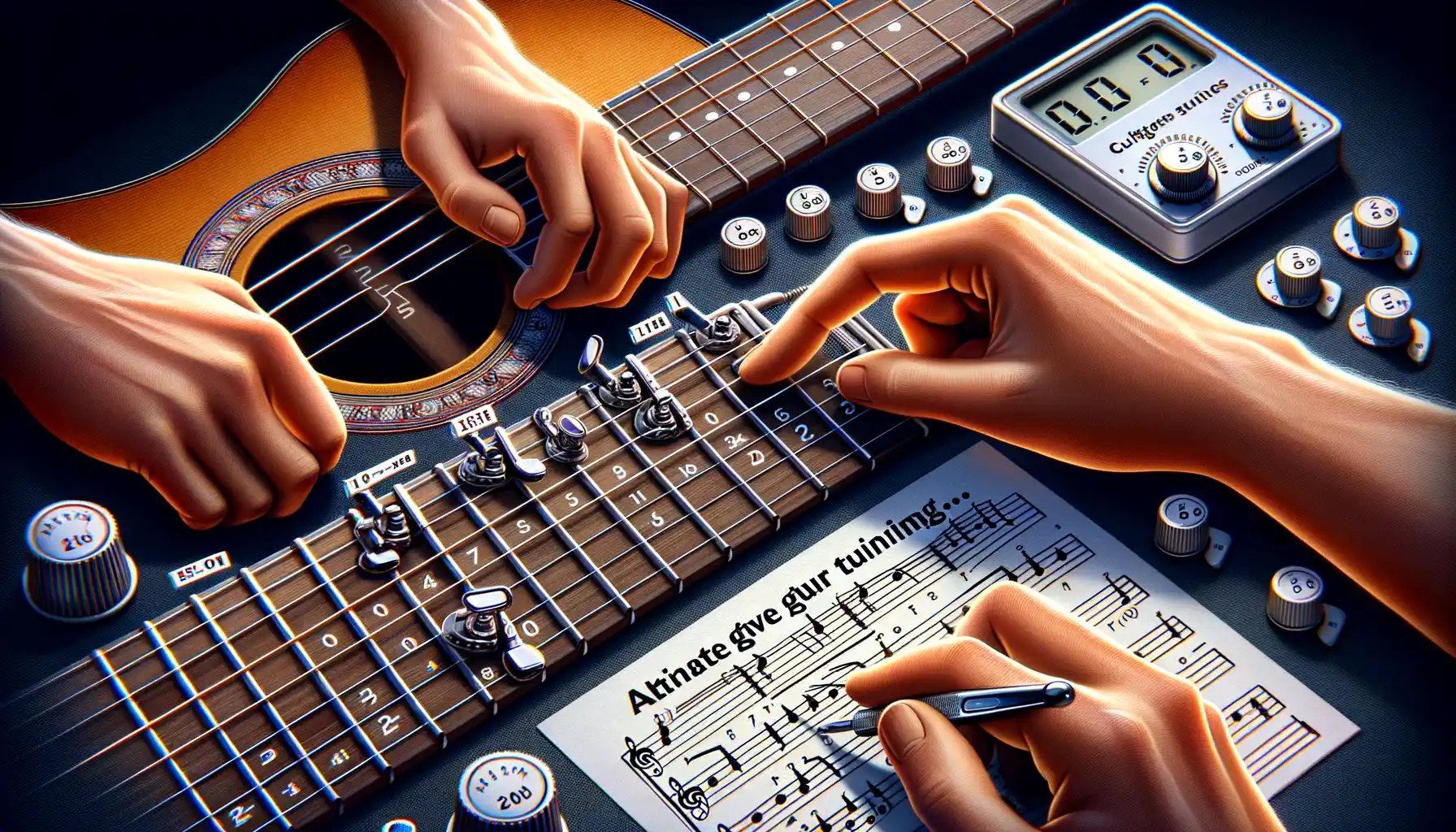
Unlocking the Secrets of Alternate Tuning Techniques
Switching to an alternate tuning is like stepping into another world—you’re still playing guitar, but the landscape has completely shifted. To navigate this new terrain, you’ll need some fresh approaches. Here’s how to make your playing truly sing in alternate tunings:
- Experiment with Open Strings: Unlike standard tuning, many alternate tunings (like Open D or Open G) thrive on resonant, ringing open strings. Try strumming chords without pressing anything down—sometimes, simplicity is magic.
- Slide and Barre It Up: In tunings like Open E, barre chords are your new best friend. Glide a single finger across the fretboard, and suddenly, you’re creating entire harmonic universes.
Think Outside the Fretboard
Alternate tunings often demand a shift in mindset. For example, in Drop D, that low D note creates a deep, growling foundation for riffs and power chords—perfect for genres like metal and grunge. Meanwhile, in tunings like DADGAD, fingerpicking patterns shine like sunlight through stained glass. Try arpeggiating simple chord shapes and let unexpected melodies emerge.
And here’s a pro tip: don’t just rely on shapes you already know. Let go of muscle memory and use your ears instead. After all, some of the most iconic tracks ever written—hello, Kashmir—were born from happy accidents in alternate tunings.
Tips and Tricks for Exploring New Sounds

Unleash the Magic of Experimentation
Stepping into alternate tunings is like discovering secret passages in a familiar house—suddenly, everything feels new and alive. Start with baby steps: pick one tuning (say, Open D) and strum freely before diving into chords or melodies. Listen closely. Notice how certain strings resonate together more vividly? That’s the sound of your guitar inviting you to explore.
Try this: tune your guitar to Drop C, find a simple melody, then slide up and down the fretboard—it’s almost hypnotic! And if you’re feeling bold, mix techniques like fingerpicking with strumming. Trust your ears; their instincts are sharper than you think.
Ideas to Spark New Musical Landscapes
Sometimes, all it takes is a little creativity to break free from routine. Here are a few ideas to spice things up:
- Play harmonics in Open G—they ring out like church bells on a crisp morning.
- Write just one riff in DADGAD. It’ll sound cinematic, guaranteed.
- Let odd tunings like Csus2 guide your songwriting—don’t fight them!
The beauty here is spontaneity. One wrong note could lead to the most exciting discovery of your musical journey.




